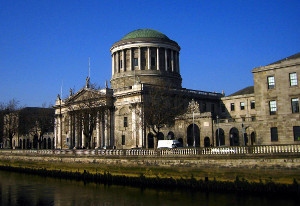Court of Appeal: €85,000 award upheld for woman who witnessed aftermath of fatal car accident

The Court of Appeal has upheld an award of €85,000 for psychiatric damage caused to a woman who witnessed the aftermath of a fatal car accident. The woman was the first person on the scene and suffered post-traumatic stress disorder after seeing the deceased driver.

About this case:
- Citation:[2022] IECA 28
- Judgment:
- Court:Court of Appeal
- Judge:Mr Justice Seamus Noonan
The defendant’s insurer appealed the decision on the basis that the woman was a “secondary victim” of the accident, relying on English authorities such as Alcock v. Chief Constable of South Yorkshire Police [1992] 1 AC 310. However, the court held that the primary/secondary victim distinction for psychiatric injuries did not exist in Irish law and dismissed the appeal.
Background
In January 2017, the plaintiff was driving her car while it was dark. She was driving a short distance behind Mr John O’Connor on the N72 national secondary road near Mallow, County Cork. Tragically, Mr O’Connor collided with an oncoming bus and suffered fatal injuries.
The plaintiff did not see the collision but her car was struck by flying debris from the accident. As she stopped her car, the plaintiff saw Mr O’Connor’s severely damaged vehicle ahead. The plaintiff ran to the car and observed the terrible injuries which Mr O’Connor had suffered. His body had been severely mutilated, with some of his remains being propelled onto the back seat.
The plaintiff suffered a significant shock, but still managed to call the emergency services. While waiting for the emergency services to arrive, the plaintiff searched the area for further victims. After the ambulance arrived, she returned home.
Subsequently, the plaintiff developed a post-traumatic stress disorder and issued personal injuries proceedings against Mr O’Connor’s nominated representative and the bus company.
The insurer for Mr O’Connor was FBD Insurance, who admitted negligence in the case. There were no factual disputes between the parties. However, liability was denied on the basis that Mr O’Connor did not owe a duty of care to the plaintiff. First, it was submitted that the plaintiff was a “secondary victim” to the accident, meaning that the plaintiff had to meet further criteria to receive compensation (Alcock v Chief Constable of South Yorkshire Police).
Second, it was argued that where the primary victim suffers injury as a result of his own negligence, the psychiatric injury suffered by the plaintiff as a result of witnessing the defendant’s self-inflicted injury was not compensable as a matter of policy.
The High Court held that the proper test for shock-induced injuries was found in Kelly v. Hennessy [1995] 3 IR 253. The only issue arising in the case was the fifth limb of the test, being whether a duty of care was owed. The court held that the test for duty of care was determined by reference to the Glencar Exploration plc v. Mayo County Council (No. 2) [2002] 1 IR 84. As such, the court held that it was not bound by the primary/secondary victim distinction under English law.
The court also held that the second argument was not part of Irish law and declined to follow the decision in Greatorex v. Greatorex [2000] 1 WLR 1970. The trial judge awarded €85,000 in damages to the plaintiff. The defendant appealed the decision to the Court of Appeal.
Court of Appeal
Delivering the main judgment in the case, Mr Justice Seamus Noonan held that Irish jurisprudence stopped short of adopting the primary/secondary distinction for psychiatric damage found in English law. It was noted that, in Kelly v. Hennessy, Chief Justice Hamilton did not even refer to primary/secondary victims or to the Alcock case, while Ms Justice Denham held that it was not necessary to decide if proximity factors should play a role in determining liability for psychiatric injuries.
The court also considered Curran v. Cadbury Ireland Limited [2000] 2 ILRM 343, in which it was held that, if a primary/secondary victim test was employed, a participant in an accident would be a primary victim.
The Curran case provided a useful summary of the position in English law, which requires that, in addition to reasonable foreseeability, a person must show that they had a close relationship with the victim and were temporally/spatially proximate to the accident.
The court went on to consider other important authorities, including Fletcher v. Commissioners of Public Works 1 IR 465 and Cuddy v Mays [2003] IEHC 103. The court determined that “the primary/secondary classification developed by the English courts, and by extension the associated control mechanisms, have not, at least to date, been adopted into the law of this jurisdiction.”
As such, the court agreed that the matter should be determined by reference to the Kelly and Glencar cases. However, it was held that even if the primary/secondary victim distinction applied, the plaintiff would be a primary victim. The court stated that the plaintiff’s car was struck by debris and was therefore clearly at risk of physical injury. In fact, the plaintiff was lucky that the debris did not go through her windshield or cause a tire to blow out.
On the facts, it was “beyond argument” that it was reasonably foreseeable that the plaintiff would suffer injury (physical or psychiatric) from Mr O’Connor’s negligence. The court was satisfied that Mr O’Connor owed a duty of care to the plaintiff, which completed the fulfilment of the Kelly criteria.
In these circumstances, the court held that it was unnecessary to determine the second issue raised by the defendant. The court expressed “misgivings” about the decision in Greatorex, noting that there did not appear to be a bar on recovery where injuries were inflicted in a deliberate, intentional manner.
Conclusion
The court dismissed the appeal and upheld the decision of the trial judge.





